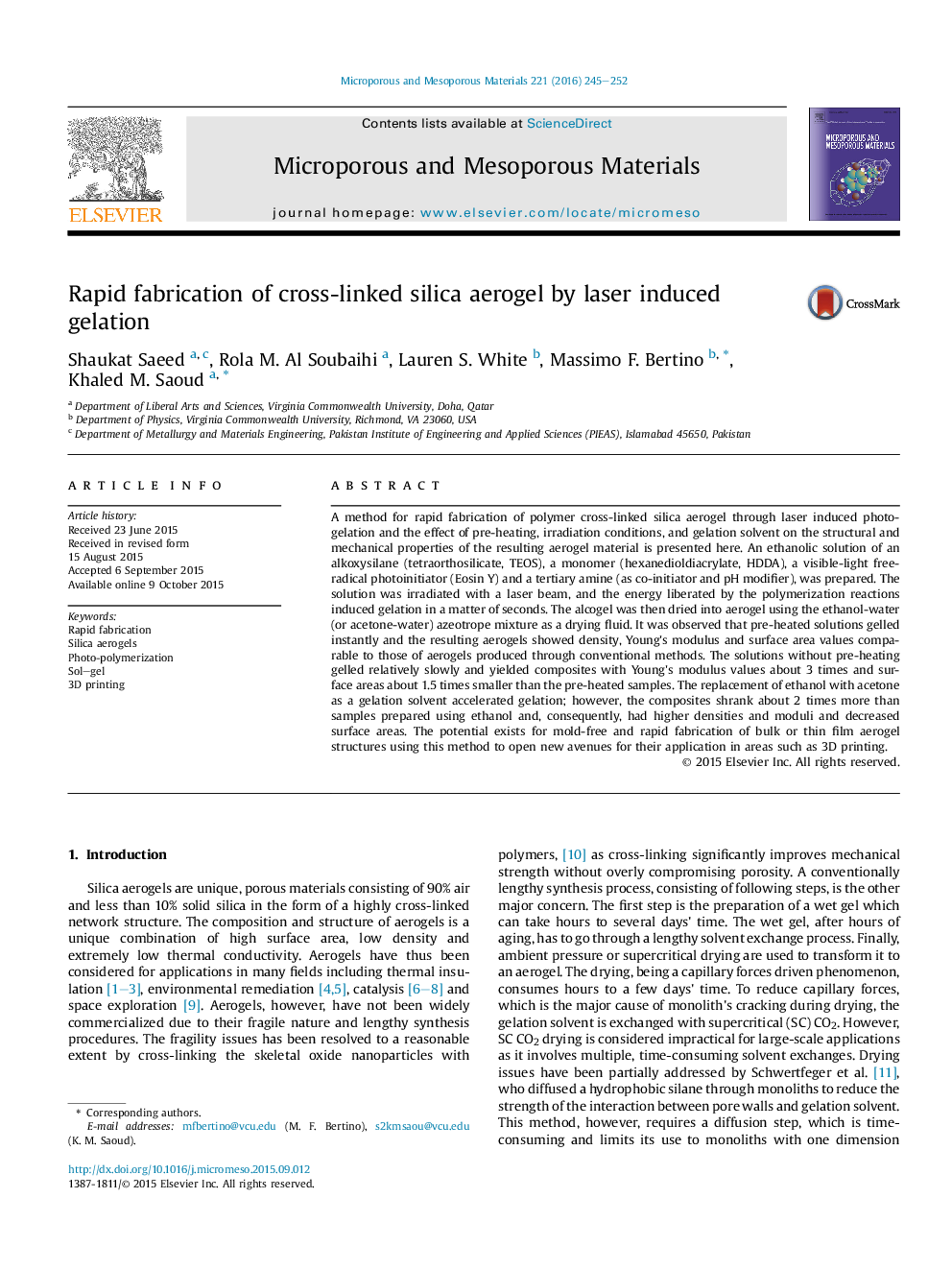| Article ID | Journal | Published Year | Pages | File Type |
|---|---|---|---|---|
| 72336 | Microporous and Mesoporous Materials | 2016 | 8 Pages |
•Polymer cross-linked silica alcogels are produced in a matter of seconds by illuminating the gelation solution with a laser beam (λ = 532 nm), causing photopolymerization and gelation.•Solution used includes TEOS, AlCl3·6H2O, Eosin Y, hexanedioldiacrylate, trimethoxysilylpropyl methacrylate, and an amine.•The role of pre-heating, irradiation conditions, amine and gelation solvent on gelation behavior, structural and mechanical properties of the ensuing aerogels were explored.
A method for rapid fabrication of polymer cross-linked silica aerogel through laser induced photogelation and the effect of pre-heating, irradiation conditions, and gelation solvent on the structural and mechanical properties of the resulting aerogel material is presented here. An ethanolic solution of an alkoxysilane (tetraorthosilicate, TEOS), a monomer (hexanedioldiacrylate, HDDA), a visible-light free-radical photoinitiator (Eosin Y) and a tertiary amine (as co-initiator and pH modifier), was prepared. The solution was irradiated with a laser beam, and the energy liberated by the polymerization reactions induced gelation in a matter of seconds. The alcogel was then dried into aerogel using the ethanol-water (or acetone-water) azeotrope mixture as a drying fluid. It was observed that pre-heated solutions gelled instantly and the resulting aerogels showed density, Young's modulus and surface area values comparable to those of aerogels produced through conventional methods. The solutions without pre-heating gelled relatively slowly and yielded composites with Young's modulus values about 3 times and surface areas about 1.5 times smaller than the pre-heated samples. The replacement of ethanol with acetone as a gelation solvent accelerated gelation; however, the composites shrank about 2 times more than samples prepared using ethanol and, consequently, had higher densities and moduli and decreased surface areas. The potential exists for mold-free and rapid fabrication of bulk or thin film aerogel structures using this method to open new avenues for their application in areas such as 3D printing.
Graphical abstractFigure optionsDownload full-size imageDownload as PowerPoint slide
